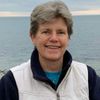What was there before selfies? – Street Photographers!
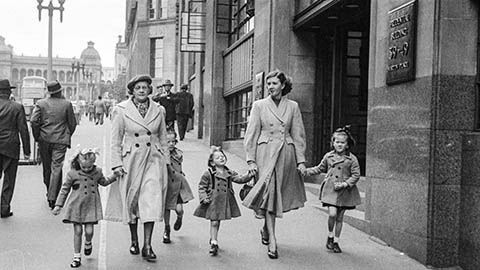
Street photography is everything. Fashion, documentary, and at the most basic, real. Street photography aims to capture people in public places, warts and all. (Credit: - expertphotography.com)
During the mid-20th century, commercial street photographers were a familiar sight on Sydney’s streets. The Sydney Museum made a hugely successful public call-out for photos for the Street Photography exhibition for photos from private albums from the 1930s to 1950s. The exhibition’s curator, Anna Cossu, said ‘the photographers caught pedestrians unaware – mid-stride, talking or deep in thought as they went about their day, and the public loved it.’
During the call out an extraordinarily rare collection of street photography negatives came to light. The Ikon Studio negatives provide a fascinating visual narrative of the street photographer at work. Remarkably, 127 rolls of film taken by Ikon Studio which operated from the late 1940s to the late 1950s have survived.
All of the 5000 Ikon Studio photos were shot between May and December 1950 in Martin Place, Sydney.
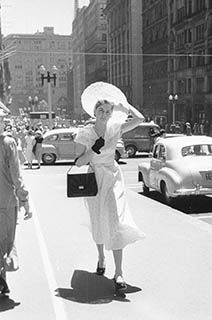
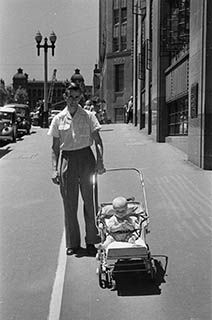
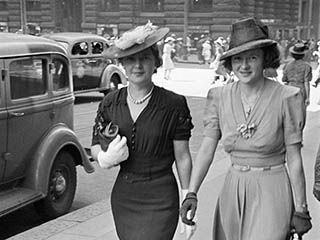
For those like Jane and I who grew up in Sydney or frequent visitors might recognise some of the background images- looking up Martin Place towards Macquarie Street or down towards George Street.
As many as 10,000 photographs were sold each week.
Street photographers soon learned who was more likely to buy these candid photos. The best ‘marks’, according to one street photographer interviewed in 1951 by The Sun, were ‘young romantic couples’, followed by ‘doting mothers’, then ‘middle-aged women’ out for the day, servicemen, and families visiting from the country. The worst marks were ‘plain ordinary men’.
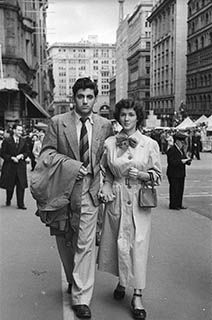
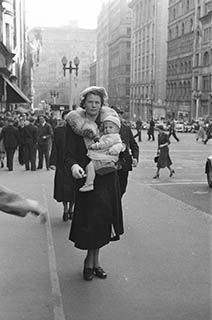
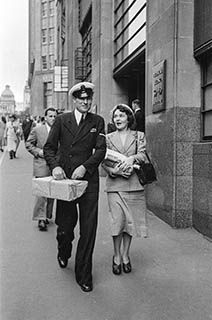
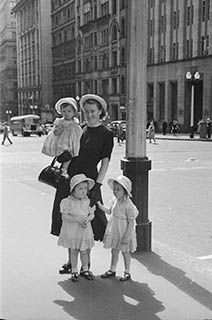
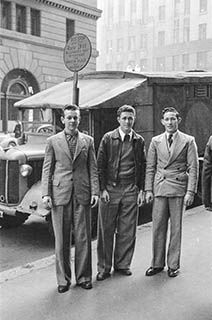
In the photo below, taken not long after they were married, D’Arcy Niland and Ruth Park look confident and optimistic, ready to embark on their lives together and their writing careers. They would both become successful authors, best known for The Shiralee (Niland, 1955) and The harp in the south (Park, 1948).
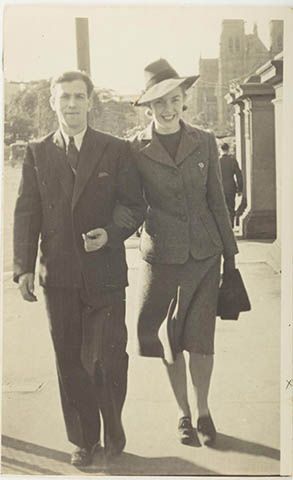
But not everyone welcomed this new industry and street photographers came to be seen as a nuisance: some objected to being pestered on the street and having their photograph taken without permission.
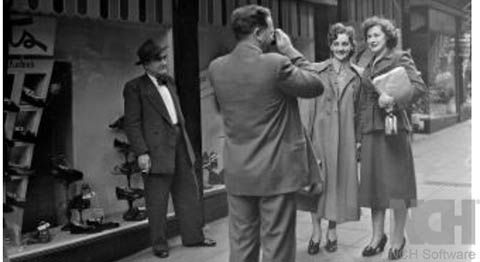
However, it was the street photographers’ cards that landed them in trouble with the city council. While taking photos on the streets was not against the law, handing out cards – and the littering that ensued when the public discarded them – breached the council’s by-laws The council actively pursued street photographers, issuing fines as a deterrent. Between 1931 and 1940 there were over 2000 prosecutions brought against street photographers.
In 1934 a group of street photography firms formed the Candid Photographers’ Association with the aim ‘to make street photos legal’.
On 2 May 1949 the council finally introduced street photography licences.

https://sydneylivingmuseums.com.au/exhibitions/street-photography
The names and stories behind street photographs are often lost with the passing of time, and The Sydney Museum was unable to identify many of the people whose images are featured in the Street Photography exhibition. However, they learnt the moving story behind one image of two curly-haired children.
Published in a newspaper article about the exhibition, the photo was spotted by a member of the public who had a very similar photo (right) in her own family album, showing her late father, Michael Finn.
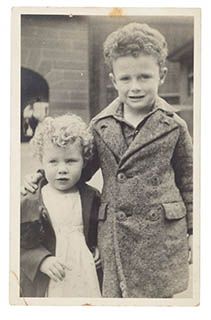
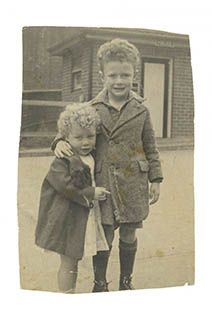
The two photos clearly belong to the same sequence of images, captured by a street photographer outside Central Station in late 1939. In both photos, six-year-old Michael has a reassuring arm around his two-year-old sister Margaret.
These photos now hold a much greater significance than could have been anticipated at the time. The photos are possibly among the last images of Margaret, who was fatally injured in a road accident not long after, on 6 January 1940.
By the 1950s the number of stands in operation had declined, and in 1958 there were just 16 licensed sites left in the city. The last licence, held by Charles Ramsay for No 33 in Martin Place, was cancelled in 1971.
For further stories, behind the photos visit
https://sydneylivingmuseums.com.au/stories/city-million-faces
Much of the main text and all photos credit:- sydneylivingmuseums.com.au
